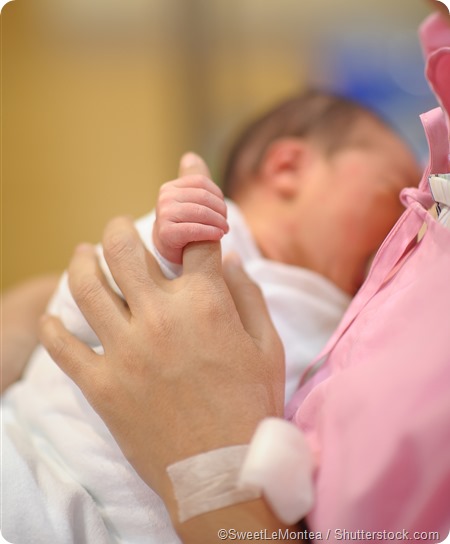In vitro fertilization (IVF) came to the forefront of public attention following its first success in 1978. Since then it has evolved in many ways to become a procedure which is more efficient and safe. At present, more than 2 million babies have been born with the use of IVF.
However, pregnancy and live birth rates following IVF vary between centers, regions of the world, and individual women.
Terms to be defined
- Fertilization rate: this denotes the percentage of oocytes that undergo fertilization after being mixed or injected with sperm
- Pregnancy rate: the achievement of pregnancy after embryo transfer took place
- Live birth rate: at least one live birth following an IVF cycle
- Singleton live birth: the birth of a single baby at or after 37 weeks gestation
IVF Success Rates
Factors which affect the success of IVF
In IVF, multiple treatment stages must be carried out in precise sequence and timing. The rate of pregnancy and live birth varies from stage to stage. Several factors influence the survival and development of the conceptus at and through each phase of treatment.
Some factors which affect the success of this procedure have been studied to evaluate their impact. They include:
Age of the woman
In general, the older the woman is, the less are the chances of a live birth. However, if a woman chooses to use donor oocytes, the effect of this factor is negligible. The percentage of women who use this option has shifted, as has the indication.
From being women with premature ovarian failure who could not produce their own oocytes, today most women who used donor oocytes are those who have elected to start a family late, because of changing social and demographic patterns.
This includes preferring to pursue education or a career rather than marriage and childbearing; increased rates of divorce and remarriage, with the expectation of bearing children within the new partnership; and increased rates of tubal or pelvic inflammatory disease as sexual mores have become more lax.
Oocyte yield is associated most strongly with age, but other factors that influence it include:
- Longer duration of infertility
- Primary infertility
- Presence of infertility associated with endometriosis, male factor, or anovulation
Male infertility
Women whose husbands are infertile are generally younger and have better quality oocytes at the time of seeking IVF than women with other causes of infertility. This results in a higher pregnancy and live birth rate.
Fertilization failure or poor fertilization
Poor or failed fertilization, where less than 20 percent of inseminated oocytes were fertilized, has been linked to the following:
- Prolonged and primary infertility
- Male factor infertility
- A lower number of retrieved oocytes
Failure of embryonic development
Between 4 to 5 percent of women fail to have embryos develop from the fertilized oocytes.
Failure of implantation
Following the development and implantation of an embryo, approximately 60 percent fail to conceive. This was affected by:
- Rising age of the woman
- Implantation of more than two embryos
- Prolonged and primary infertility
- Low oocyte retrieval rate
- Low rate of embryo utilization
Poor live birth rate
After embryo transfer, poor live birth rate was associated with:
- Increasing age of the woman
- Transfer of one embryo only
- Low oocyte retrieval rate
- Presence of tubal disease such as a hydrosalpinx because of the potential deleterious effect of secreted fluid pent up in the fallopian tube, on the decidual quality. Thus salpingectomy has been found to double the pregnancy rate following IVF
Overall, live births occur in 32 percent of IVF cycles, indicating that most attempts to conceive by this procedure are still not successful.

Laboratory criteria
Laboratory criteria to help predict the success of IVF include the number of oocytes, zygotes, and embryos that develop normally in culture. The number and the quality of the blastocysts that develop to the stage of transfer significantly impact the pregnancy rate.
Use of intracytoplasmic sperm injections (ICSI)
In modern assisted reproductive technology (ART), intracytoplasmic sperm injection (ICSI) is routinely used in most IVF practices, and account for more than half of all such patients. Data regarding IVF outcomes therefore must be treated as including ICSI data as well.
However, it is found that ICSI is only of benefit in increasing the live birth rate when used for women with poor oocyte retrieval, and lacking this, its adoption may actually reduce the rate. The use of ICSI might thus be restricted to women with male factor infertility.
Data on IVF success rates
The most recently collated data for indices of success following IVF treatment dates from 2010, and is restricted to women who used their own eggs. Even following pregnancy and embryo transfer, not all pregnancies result in the birth of a living child. The approximate live birth rates are:
| Age of woman (years) |
Live birth rate (%) |
| <35 |
32 |
| 35-37 |
28 |
| 38-39 |
21 |
| 40-42 |
14 |
| 43-44 |
5 |
| ≥45 |
2 |
Statistics vary from one clinic to another and must be looked at carefully.
Other figures vary somewhat. For instance, the Society of Assisted Reproductive Technologies puts forward the following rates:
| Age of woman (years) |
Live birth rate (%) |
| <35 |
41-43 |
| 35-37 |
33-36 |
| 38-40 |
23-27 |
| ≥45 |
13-18 |
References
- https://www.betterhealth.vic.gov.au
- https://www.ncbi.nlm.nih.gov/pmc/articles/PMC1936357/
- https://www.ncbi.nlm.nih.gov/pubmed/3860035
- https://www.ncbi.nlm.nih.gov/pubmed/9848289
- https://www.ncbi.nlm.nih.gov/pmc/articles/PMC3857793/
Further Reading
Last Updated: Dec 29, 2022